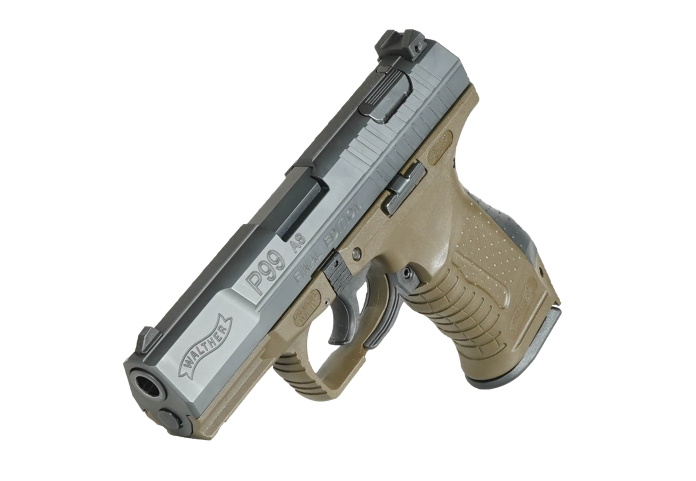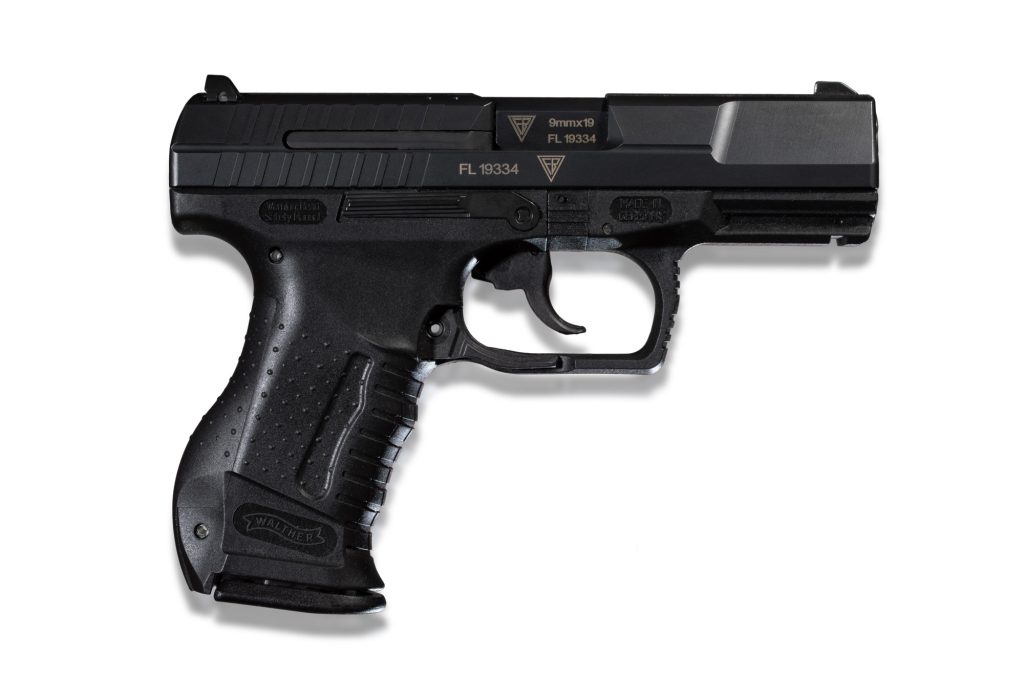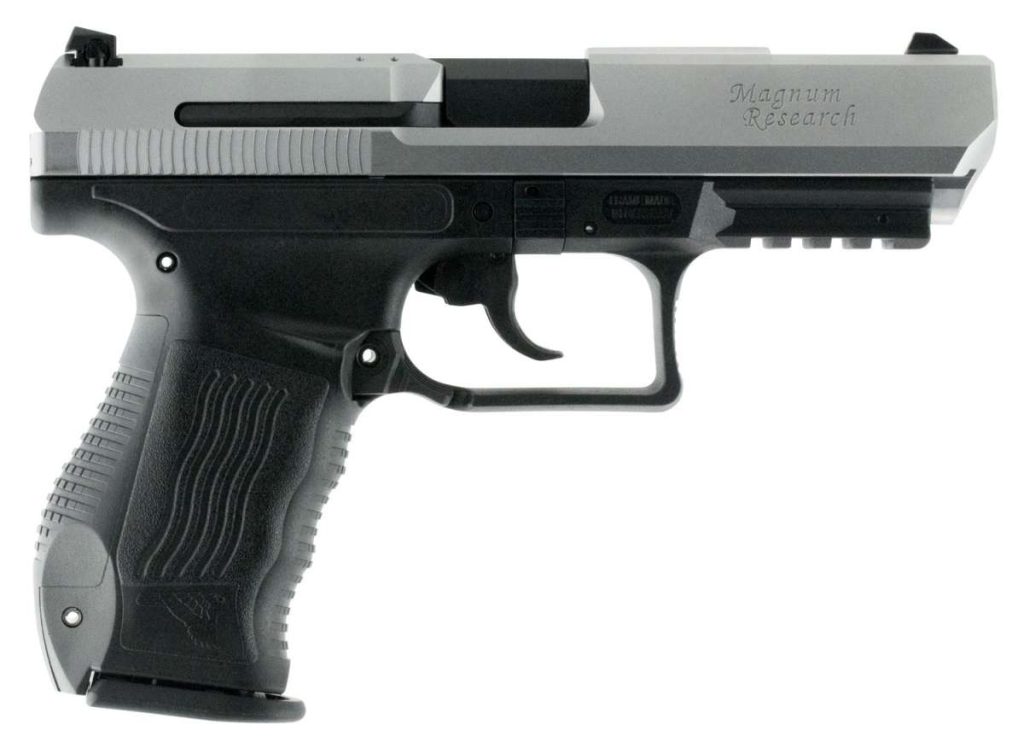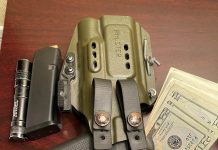
Walther’s P99 is a cult classic that never did well in the United States. It saw a good bit of success across numerous European police departments, but it never caught on with shooters in the United States. James Bond enthusiasts and Walther fans adored the gun, as did DA/SA nuts like myself. Still, the gun-buying public and American police forces weren’t buying these things by the case, so it’s odd that there are so many P99 clones on the market.

A striker-fired, DA/SA design isn’t exactly common, and it blended the old school world of the DA/SA hammer-fired pistol with the modern polymer frame, striker-fired design. If we take a step back to 1997, we can see why it didn’t appeal to traditional DA/SA fans, and I can see why the gun didn’t appeal to the fans of Glock pistols. The P99 was odd, and it’s even weirder how many people tried to make the design work with P99 clones.
Since Walther has recently announced they are discontinuing the P99 and releasing one final P99 Final Edition line, I figured let’s take a peek at all the clones of the Walther P99.
Attack of the P99 Clones
How many people tried to clone the P99? Well, Walther did; they teamed up with two major companies to release several models of the gun under the banner of different companies. Additionally, we have specific models produced under license and one rogue do it themselves firm from Germany. Let’s dig and examine the World of P99 Clones.
The Fabryka Broni Radom P99 RAD
I’m not trying to spell that over and over, so we’ll call it the P99 RAD. The P99 RAD was a licensed design from Poland. Radom wanted to enter Polish military trials, so they licensed the original 1997 design with some small changes. Noticeably, the slide is fairly different, and the rail is a picatinny design. We also see a much different grip texture. This P99 clone featured an ambidextrous slide lock and the ambidextrous magazine release.

The interesting thing is that Walther would later take some of these design differences and produce the PPQ. If you look at a P99 RAD and a PPQ, they clearly show some lineage to each other. It would seem Walther got more out of the contract than just a licensed copy.
The Smith and Wesson SW99
Let’s say you’re Smith and Wesson, and you just produced your first polymer frame pistol known as the Sigma. What came next? A slap from Glock with a lawsuit means they are capturing some of that polymer frame money from you. It’s clear the world is moving to the polymer frame, striker-fired pistol. What are you to do to keep up?
Well, you have a good relationship with Walther since you import some of their pistols. The P99 wasn’t a great seller in the States under the Walther banner, but maybe under the S&W banner, it could do better. Thus, the SW99 was born.

Smith and Wesson made the slide, and Walther made the frames. The design was a P99 with a slightly different appearance and slightly different frame design. The gun came in 9mm, 40 S&W, and 45 ACP. I’m pretty sure this is the only 45 ACP with the P99 treatment. The barrel is also a quarter inch longer on the full-sized model than the standard 9mm model of the P99.
While the P99C is fairly expensive and tough to find, the SW99C tends to be common, and I picked one up for 300 bucks, so it’s an easy route to get a compact P99ish weapon.
Magnum Research MR9 and MR40
Magnum Research, producers of the Desert Eagle, also teamed up with Walther to produce The MR9 and MR40 Eagle pistols. Like before, Walther produced the frame, and Magnum Research made the slide. The frame is fairly standard for the P99, but it does have a Picatinny rail instead of the proprietary rails we are used to seeing with P99s.

The Magnum Research MR9 and MR40 were fairly standard. What stood out to most people was the stainless slides, which do look nice. These pistols kept the P99 styling and design. The only thing notable was that the MR9 also came with a 4.5-inch barreled model with a slant frontend that gives it a desert eagle-like look.
Canik TP9 and TP9DA
Turkish manufacturer Canik is pretty famous these days for their polymer frame striker-fired pistols. I doubt a lot of people know they started life as a manufacturer of P99 clones. The TP9 and TP9DA were basically the Turkish take on the P99. This includes the original TP9 and the TP9DA. These guns feature the same DA/SA design as the original Walther, and the earliest models had the trigger guard magazine release.

Later models, including current models, feature a standard button release. A few different versions seemingly had both the button and trigger guard magazine release. There were plenty of models produced, but they didn’t do anything revolutionary with the P99 clone variants. They have since moved away from the DA/SA designs and embraced SAO models only.
Weird World of P99 Clones
As the P99 wraps up 26 years of service, it’s interesting to look back and see why so many were produced. The P99 has served a couple of dozen police forces, James Bond, and plenty of gun nerds like myself. Heck, I own a P99, an SW99C, and an MR9 because the design truly fascinates me. It seems to fascinate plenty of others as well.



